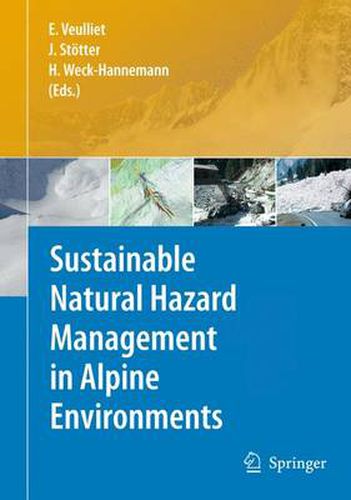Readings Newsletter
Become a Readings Member to make your shopping experience even easier.
Sign in or sign up for free!
You’re not far away from qualifying for FREE standard shipping within Australia
You’ve qualified for FREE standard shipping within Australia
The cart is loading…






This title is printed to order. This book may have been self-published. If so, we cannot guarantee the quality of the content. In the main most books will have gone through the editing process however some may not. We therefore suggest that you be aware of this before ordering this book. If in doubt check either the author or publisher’s details as we are unable to accept any returns unless they are faulty. Please contact us if you have any questions.
In the recent past a marked increase of the damages caused by natural hazard processes has been documented, for example by the Munich Re-Insurance. On a regional scale, a similar development can be observed in mountain regions such as the Alps, where it is particularly a rise in flood events that has caused the maximum amount of economic damage. Three major aspects may help to explain this phenomenon: The changing frequency-magnitude relationship of the natural hazard processes, the multiplication of the damage potential due to the socio-economic change, and the non-adequate way of coping with the changing risk by the official authorities. As a consequence, this book tries to address key questions related to these developments and to give answers to these problems. Question 1: How can the strategies for coping with the rise in extreme flooding be improved? Question 2: How can the damage potential and other socio-economic aspects be quantified? Question 3: How can new computer based technologies contribute to minimizing the risks related to alpine natural hazards? An initial chapter gives an overview of the global change aspects of natural hazards and their related risks. While three chapters outline answers to question 1, four chapters discuss question 2. Five chapters give examples of new technologies.
$9.00 standard shipping within Australia
FREE standard shipping within Australia for orders over $100.00
Express & International shipping calculated at checkout
This title is printed to order. This book may have been self-published. If so, we cannot guarantee the quality of the content. In the main most books will have gone through the editing process however some may not. We therefore suggest that you be aware of this before ordering this book. If in doubt check either the author or publisher’s details as we are unable to accept any returns unless they are faulty. Please contact us if you have any questions.
In the recent past a marked increase of the damages caused by natural hazard processes has been documented, for example by the Munich Re-Insurance. On a regional scale, a similar development can be observed in mountain regions such as the Alps, where it is particularly a rise in flood events that has caused the maximum amount of economic damage. Three major aspects may help to explain this phenomenon: The changing frequency-magnitude relationship of the natural hazard processes, the multiplication of the damage potential due to the socio-economic change, and the non-adequate way of coping with the changing risk by the official authorities. As a consequence, this book tries to address key questions related to these developments and to give answers to these problems. Question 1: How can the strategies for coping with the rise in extreme flooding be improved? Question 2: How can the damage potential and other socio-economic aspects be quantified? Question 3: How can new computer based technologies contribute to minimizing the risks related to alpine natural hazards? An initial chapter gives an overview of the global change aspects of natural hazards and their related risks. While three chapters outline answers to question 1, four chapters discuss question 2. Five chapters give examples of new technologies.